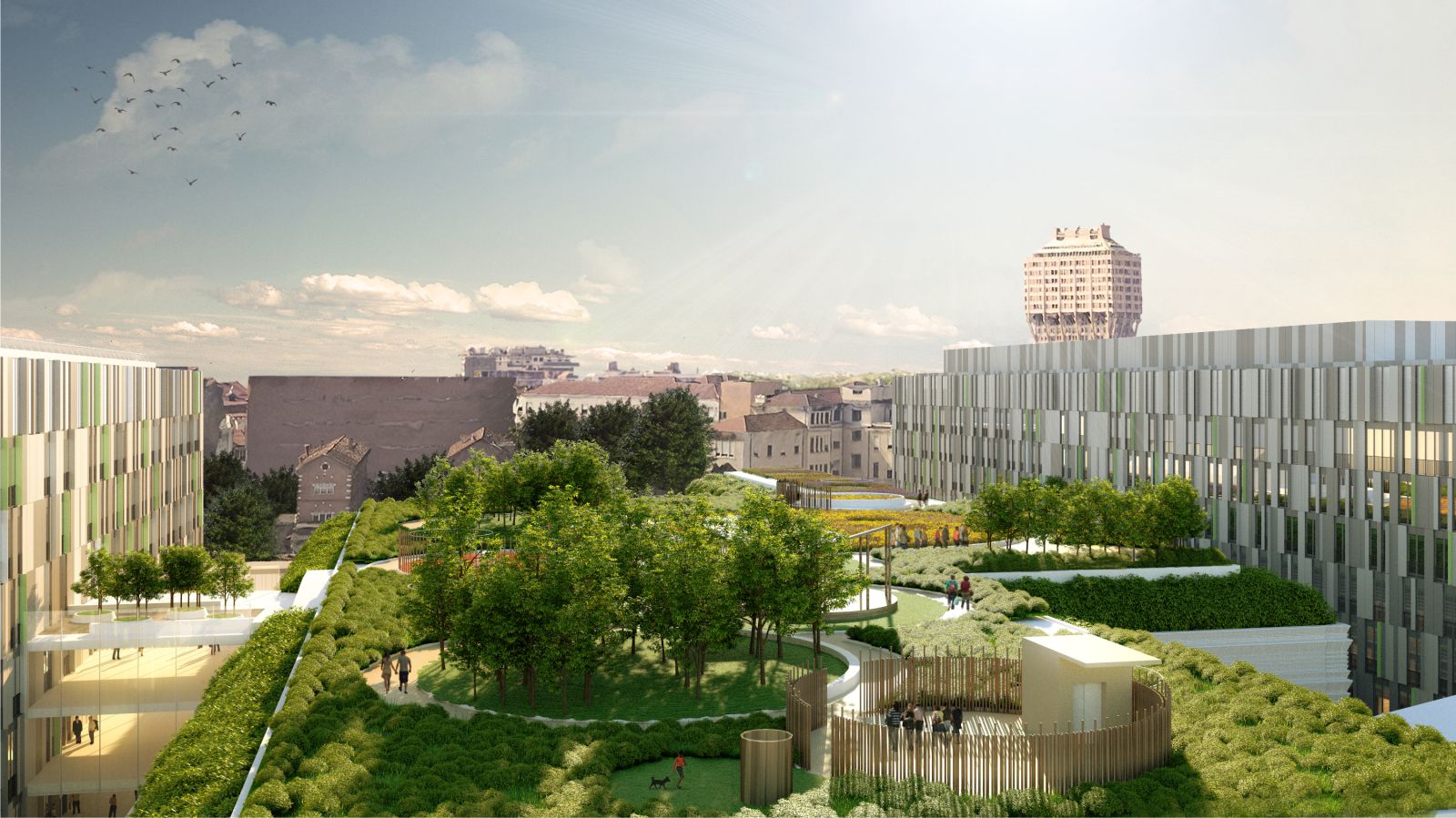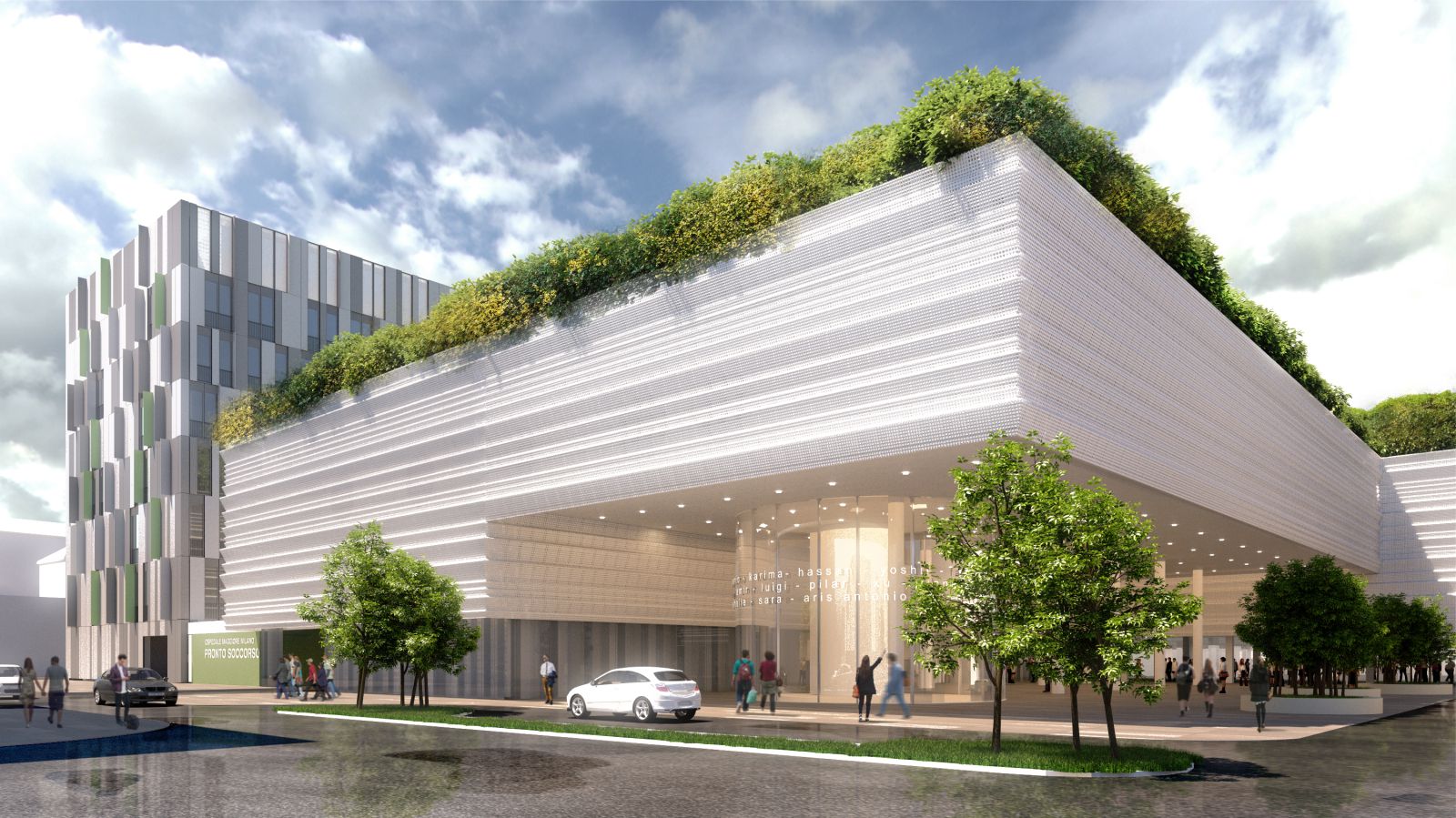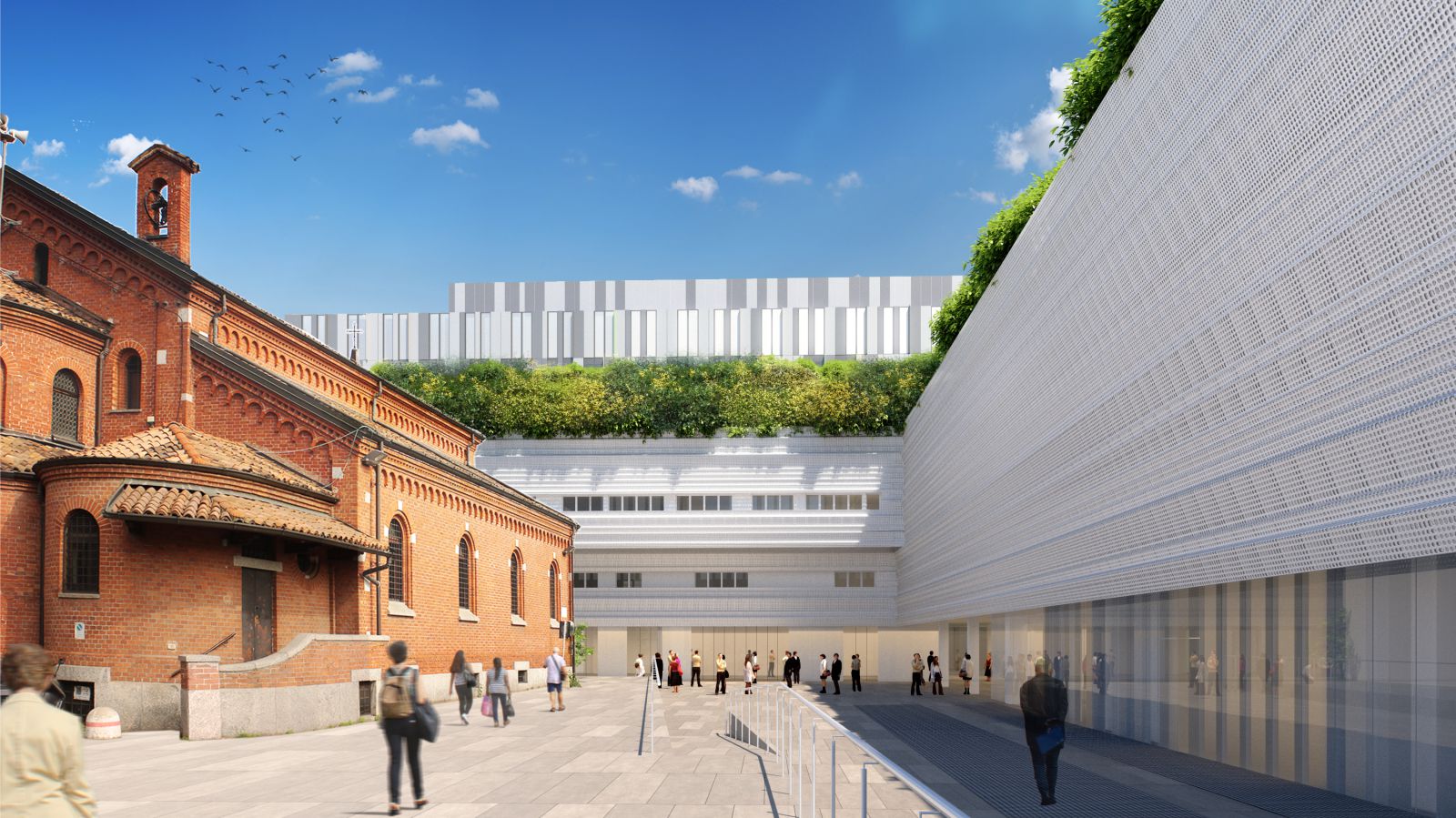Located in the centre of Milan, the Policlinico is one of the city’s main hospitals, a health citadel located within an enclosure where the different services are housed in separate buildings. While retaining part of the original structure in pavilions, the New Policlinico project introduces a large “container” in the central section of the area, referred to as the Central Building and which combines the medical/surgical and maternity/children’s wards. This consists of a couple of buildings in linear format, intended for use as the hospitalization areas and the outpatient clinics.
These are united to a central body which houses the operating theatres and the delivery/labour rooms. On its roof a lxuriant garden of over 7,000 square metres is planned whose use is initially reserved for patients and operators from the various departments, but which in future will be open to the public for both recreational and therapeutic special events. As part of the main urban reforestation projects planned for Milan, the Policlinico Roof Garden is enhanced by the added value linked to the chromotherapy potential of its landscape thanks to the changing colour of the trees depending on the different seasons.
The intervention site is located next to the historic structure of the Ca’ Grande, Milan’s first hospital, founded in 1456 by Francesco Sforza and currently the main site of the State University. Conceptually, the project is aimed at allowing the stratified memories of a historical part of the city to coexist with the overall rationalization of the large, new hospital machine. The original organization of the departments in the pavilions however, did not provide the necessary connections between departments and health functions, something that is essential in the organization of a next-generation hospital.
The transformation project therefore aims to develop the enclosure as a traversable urban system, characterized by urban service functions (both commercial and tertiary), increasing the permeability of the external public space and providing it with usable and welcoming green spaces. At the same time, the intervention efficiently organizes the operational areas, able to answer the needs of the healthcare structure, the patients and the personnel. From the spatial and distributional point of view, the complex offers significant flexibility, combined with a rational internal organization of functions and flow systems.
The heart of the system, the ground floor of the complex which will have the role of a large public gallery, will in addition to providing the main access to the hospital, function as a large covered square for the city. From here it will be possible to access the Gynecological/Pediatric Emergency Department and the Neonatal Intensive Care Unit. This logic of interchange between the hospital and the city on the ground floor also extends to the green square on the roof of the Central Building. This space is in fact also designed to host special entertainment events for patients and staff but also for the general public and will be used to promote different cultural and social structures within the city.
On a formal level, the Central Building is characterized by the facades of the two tallest buildings, made up of cell elements on rigid geometric modules which are very different from each other in the geometry of the metal frames and the colour variations of the HPL cladding panels, provided in three shades of grey. The insertion of special vertical coloured glass “fins” makes it possible to exploit the changing nature of the natural light in order to generate continuous and varying vibrations on the facades while the core of the Central Building has a façade formed by a second skin in perforated and folded sheet metal, superimposed on the primary plugging. Source by Stefano Boeri Architetti.
- Location: Milan, Italy
- Architect: Stefano Boeri Architetti
- Project team: Stefano Boeri (Founding partner), (Competition, Preliminary, Final and Detailed design) – Pietro Chiodi (coordinator), Davor Popovic (coordinator), Alessandro Agosti, Daniele Barillari, Gianni Bertoldi, Moataz Faissal Farid, Daniele Iodice; (Revision of the Final design, 2017) – Stefano Boeri (partner in charge), Vincenzo Vella (supervisor SBA), Elisabetta Zuccàla, Elisa Versari, Chiara Capponi, Valentina De Palo, Diletta Rumi; (Detailed architectural design, 2017) – Vincenzo Vella (supervisor SBA), Giovanni Singarelli (coordinator), Sidney Bollag, Stefano Bonato, Luca Brivio, Chiara Capponi, Chiara Campriani, Valentina De Palo, Maria Elena Garzoni, Diletta Rumi
- Client: Fondazione Ospedale Maggiore Policlinico Mangiagalli e Regina Elena
- Project area: 168,000 sqm
- GFA: 70,000 sqm
- Images: Courtesy of Stefano Boeri Architetti







